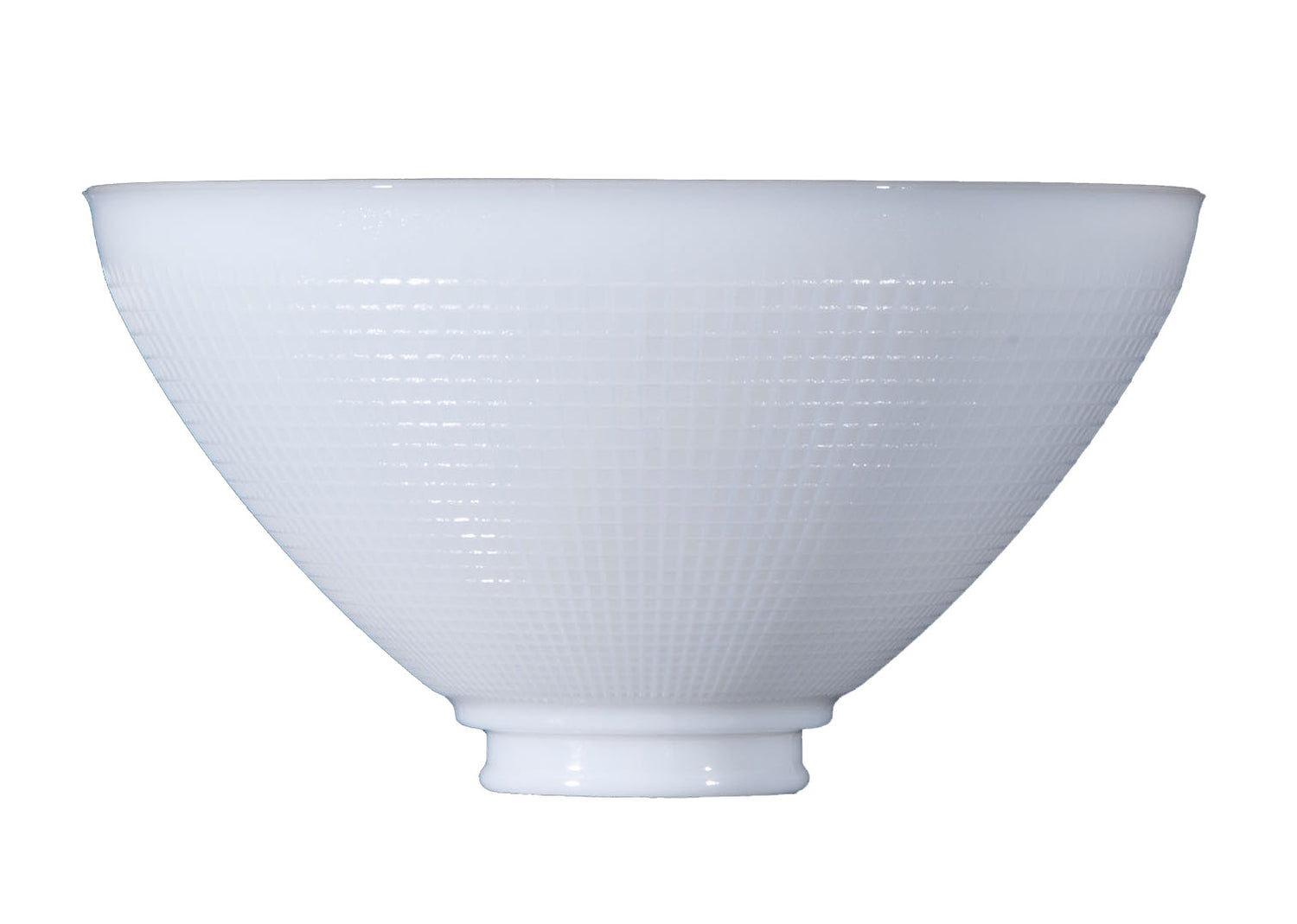The first thing you must consider when replacing a glass lampshade is the proper “fitter” size of the shade holder on your lamp or fixture. The shade holder is the part (usually metal) that holds the shade to the lamp or fixture (see “before” picture below).


The fitter is the portion of the shade holder through which the glass lampshade actually passes and makes physical contact with the lamp. Shade holders come in different fitter sizes and so do glass lampshades. The idea, logically, is to match the same fitter size for both the shade holder and shade.
Sounds easy you say. It is, but before you can start looking for a shade with the correct fitter size you should first determine the type of shade holder that your lamp or fixture has.
Determine Your type of Holder: Fixture-type or Straight

Basically, there are two types of holders for glass shades One type of holder is a fixture-type holder which is often seen on hanging fixtures, pan lights, etc. and uses small set screws to hold the lampshade in place (see fig. 1). The setscrews are necessary because sometimes, as in the case of early electric fixtures, the holders actually "face" down. If the screws are not properly tightened against the the shade’s fitter, the shade may literally fall to the floor.

Shades designed for fixture-type holders almost always have a “lip” type fitter (see fig. 2).
A shade’s fitter is the portion of the shade that is actually inserted into, and contacts, the shade holder. The shape of the lip fitter helps the setscrews lock the shade down and prevents the shade from falling from the holder, even when the holder ”faces” down. Gas shades, fixture shades, and pendant-type shades almost always have lip fitters.

Another type of shade holder which is commonly found is a straight-type holder. It requires no setscrews because this type of holder is always in an upright position so that, typically, the bottom edge (or fitter) of the shade rests inside of the shade holder’s opening (see fig. 3). Tripod shade holders or “spiders” also do not require setscrews and function in the same manner as the straight-type holder.

Shades placed in straight-type shade holders almost always have “straight” fitters, meaning the edges that contact the holder are straight (see fig. 4). One may place a “lip” fitter shade in a straight-type shade holder but often the fit and/or application will be incorrect or mismatched creating a literal but not completely uncommon, shade age faux pas.
Determine the Fitter Size of Your Shade Holder
After you have determined the type of shade holder that your lamp or fixture has, you need to measure the fitter size of the shade holder. The shade holder fitter size refers to the diameter of the opening of the holder through which the glass shade “fitter” passes.
The size of fixture-type shade holders and shades are, for the most part, standardized in North America and are found in several common sizes. Their fitter sizes and applications are as follows: 2 1/4” (electric-era fixture shades), 2 1/2" (gasolier shades), 3 1/4"(fixture & pendant), 4” & 5” (gas & pendant shades) and 6” (large pendant shades & hanging lamp slant shades).
Remember to back the setscrews out before you measure the shade holder’s fitter. There are a few odd sizes that are occasionally found on old fixtures so make sure that you carefully measure the fitter.
It is important to note that, more often than not, the correct size of lampshade for both fixture-type and straight-type shade holders will have an actual measured fitter size that will be slightly under the common and standard sizes, but never over. Below are some typical lampshade fitter sizes.

Common or standard sizes for straight fitter holders and shades are as follows: 1 5/8” (hurricane shades), 4” (ball shades and some gas), 6 1/4” (astral shades), 7”, 10”, 12” (student shades), and 14” (hanging lamp & dome shades).
Another holder type and fitter size, outside the realm of those listed above, is for torchiere floor lamps. Almost all torchiere lamps have a 2 3/4” fitter size, bugle-shaped shade holder. Look for 2 3/4” fitter size shades for these large lamps.
Replacement glass lampshade selection should always begin with a consideration of your lamp’s shade holder fitter type, then fitter size. Fortunately, our catalog lists the correct fitter size for all of our glass lampshades and can serve as a handy reference.
Though there are a myriad of sizes and designs of glass lampshades and lampshade holders, when it comes to choosing a replacement shade you needn't be intimidated. Just remember to match your lamp’s shade holder size (style & fitter) to the correct lampshade fitter size.
If your lamp requires a shade with an unusual fitter size, or maybe you have an early antique or heirloom lamp that requires additional considerations in choosing an appropriate replacement lampshade such as correct style and period, please use our dealer locator to contact one of our knowledgeable lamp parts dealers in your area. Most offer expert advice on antique and early style lighting and will be glad to assist you in making a good decision on replacement glass for your lamp or fixture.

